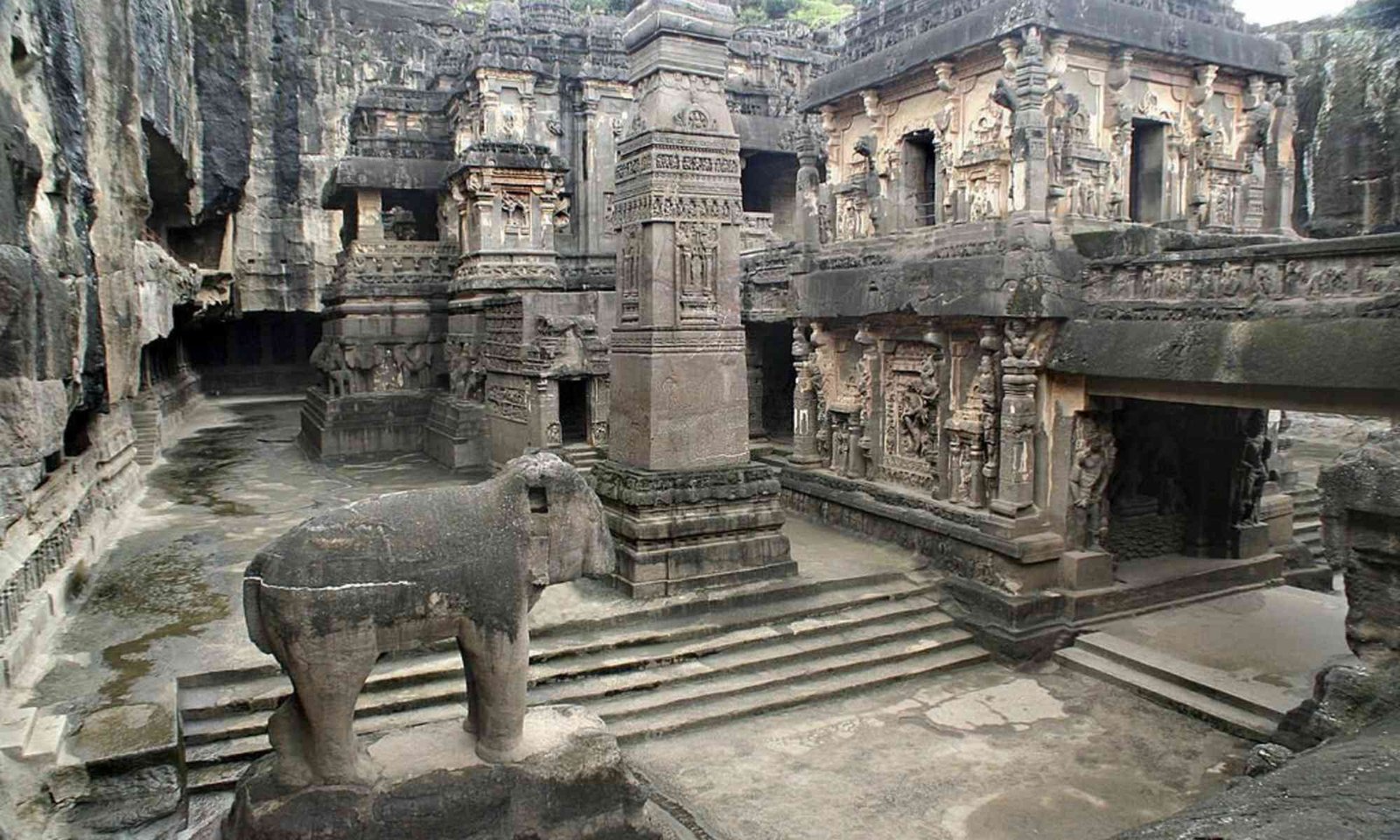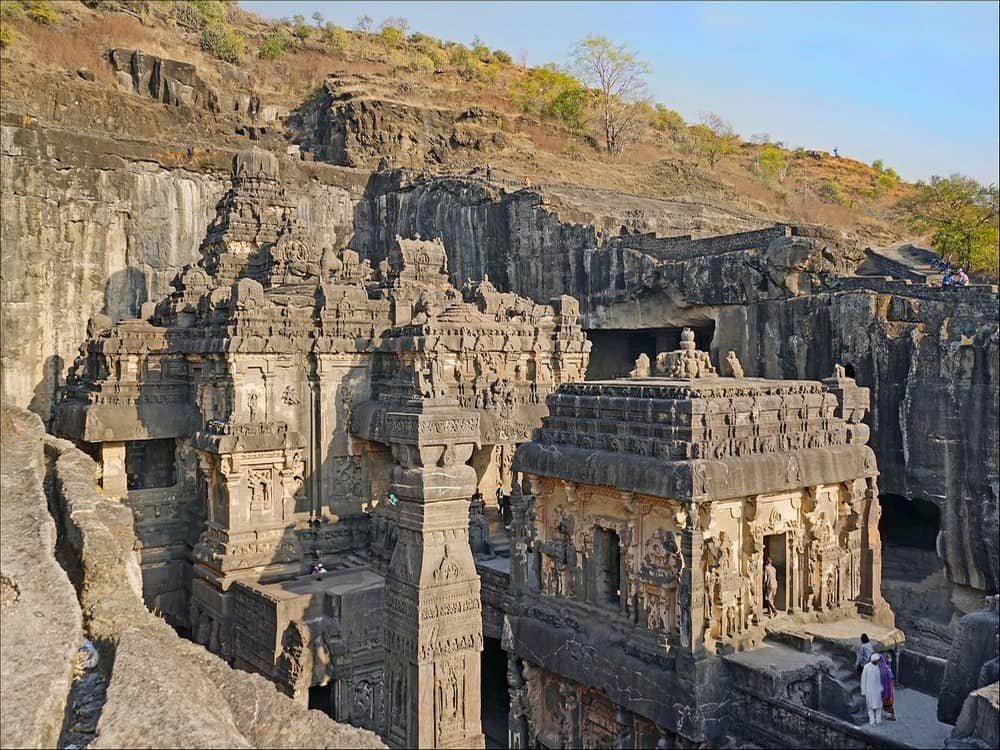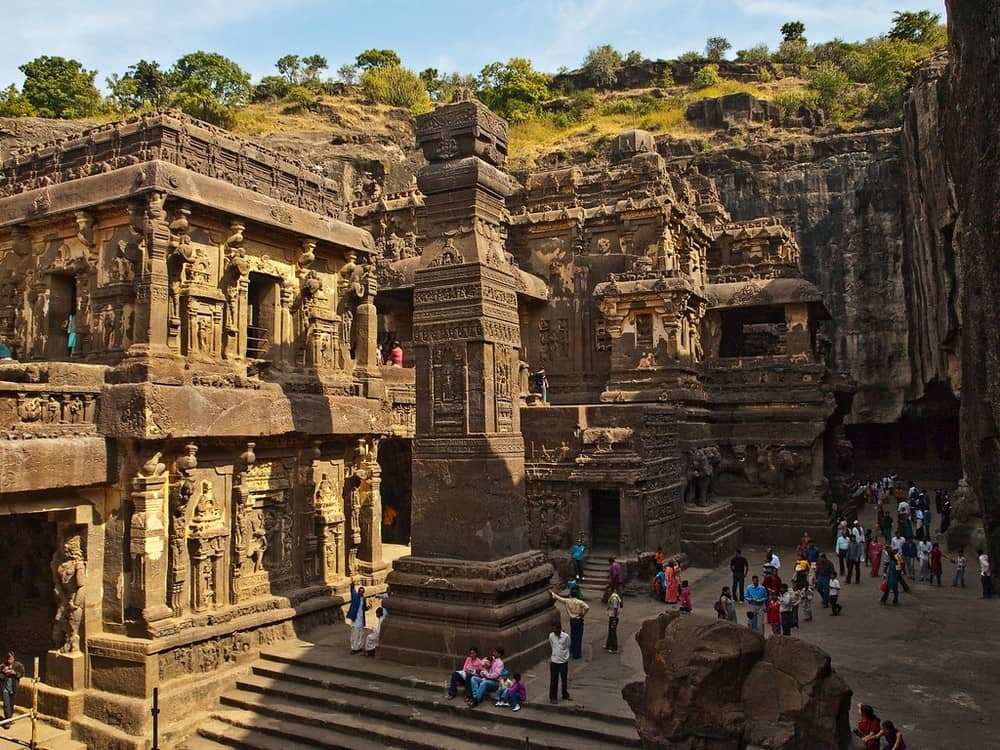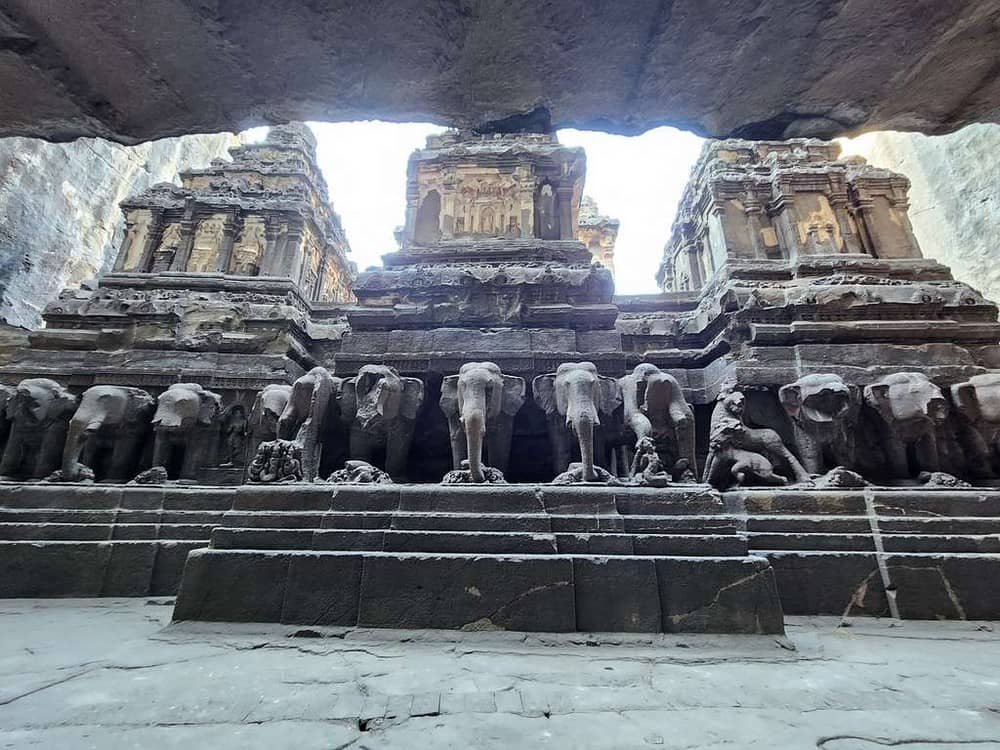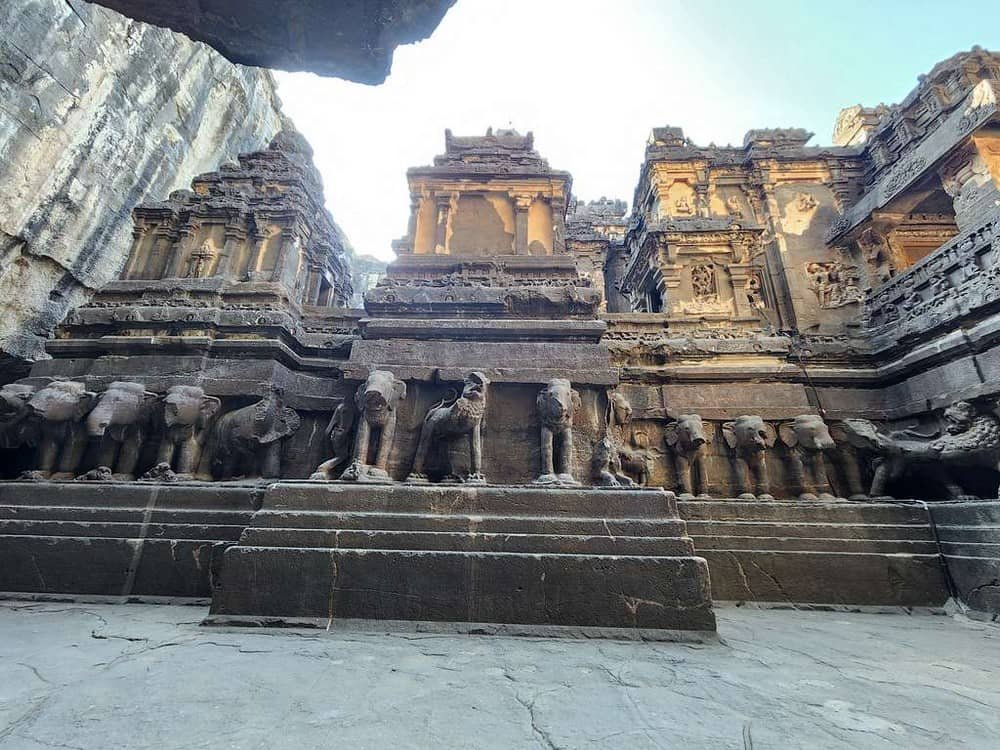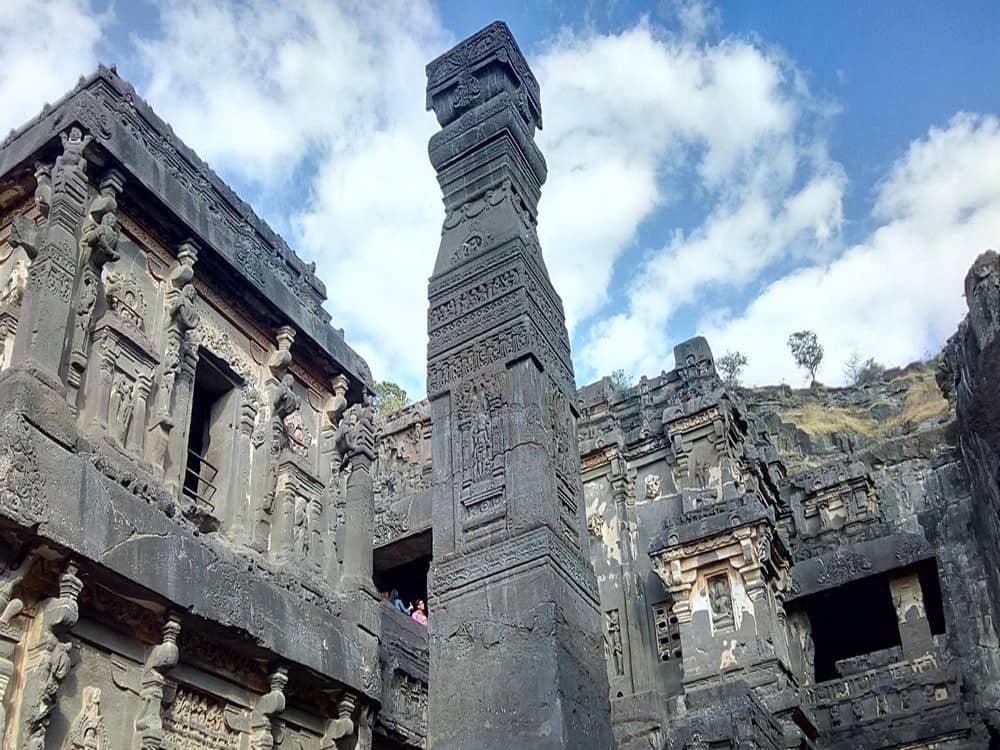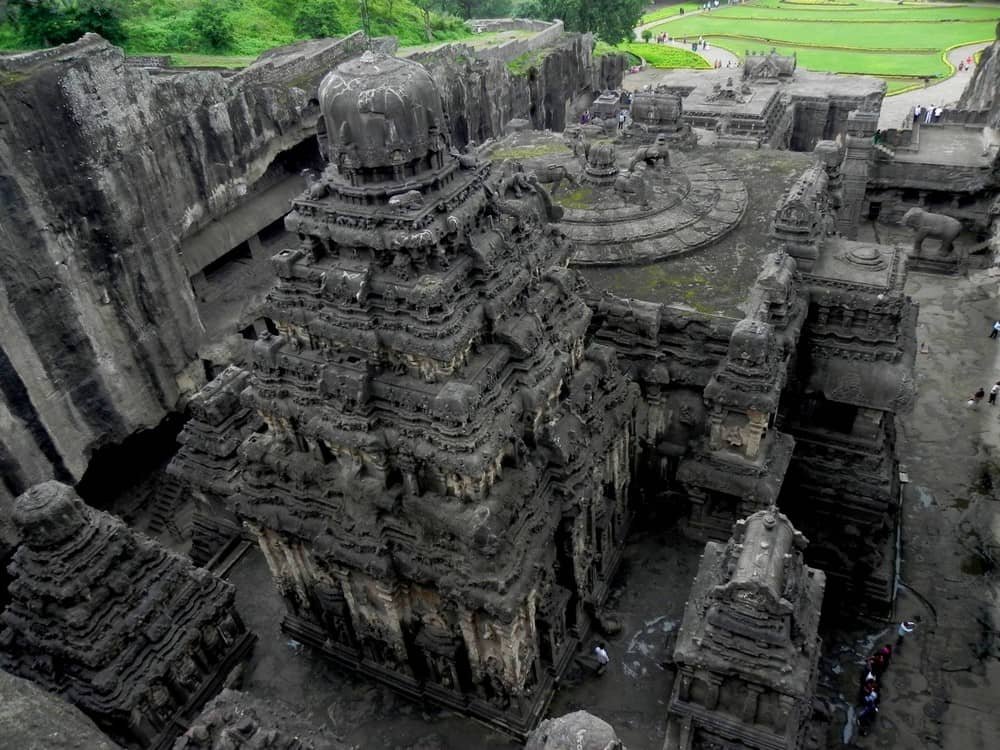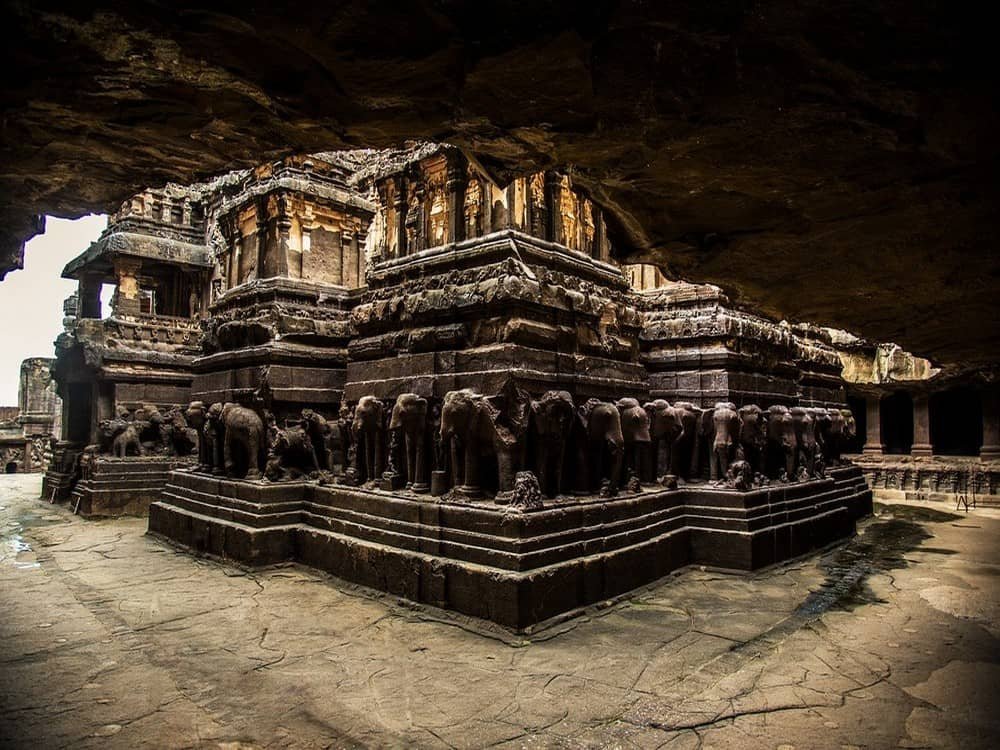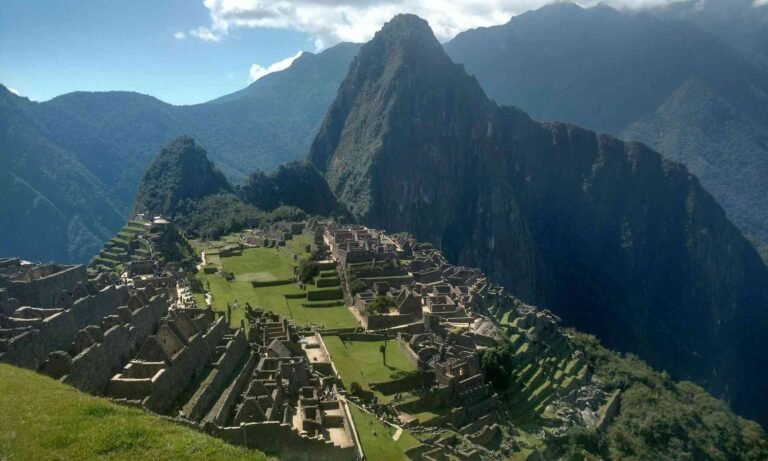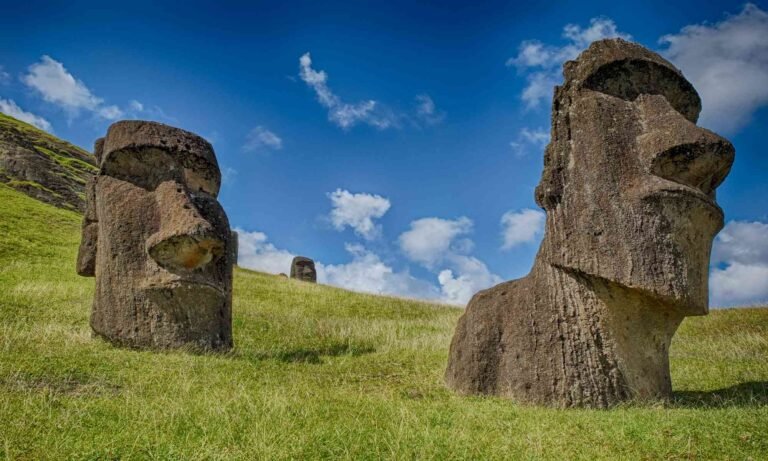Huge! The ancient temple carved out of a single rock! It’s estimated that 11,500 cubic meter of rock was removed to build the temple.
Historical Significance of the Kailasa Temple
The Kailasa Temple, an architectural marvel carved from a single rock, is one of ancient Indian architecture’s most significant achievements. Built in the 8th century under the Rashtrakuta dynasty, it showcases remarkable engineering, artistic, and spiritual devotion. Located in Ellora, Maharashtra, the temple complex highlights the sophisticated craftsmanship of Indian temple architecture at the time.
The significance of the Kailasa Temple extends beyond its architectural prowess. It symbolizes the synthesis of various cultural influences, reflecting the religious plurality of ancient India. The temple is dedicated to Lord Shiva and takes the form of Mount Kailash, which is considered sacred in Hinduism. This emphasis on Lord Shiva illustrates the temple’s role in the religious practices of the era. Additionally, its intricate carvings and detailed sculptures depict various deities and mythological narratives, embodying the rich tapestry of Hindu beliefs.
Throughout history, the Kailasa Temple has borne witness to a number of historical events that have shaped its identity. From being a site of pilgrimage to facing challenges in preservation due to natural wear and political changes, the temple has endured the test of time. Over the centuries, it has attracted scholars, travelers, and devotees alike, solidifying its status as a critical piece of India’s cultural heritage. The temple’s continued relevance and reverence underscore the importance of historical preservation, ensuring that future generations can appreciate its beauty and significance.
Architectural Marvel: Design and Structure
The Kailasa Temple, a remarkable example of ancient Indian architecture, stands as a testament to the extraordinary skills and ingenuity of its builders. Carved out of a single rock during the 8th century, this monolithic structure represents not only an architectural marvel but also a symbol of devotional artistry dedicated to Lord Shiva. The temple complex features a unique rock-cut design, where intricate shapes and forms emerge directly from the surrounding basalt, showcasing the sophistication of ancient engineering techniques.
The layout of the Kailasa Temple is meticulously planned, with its main shrine dedicated to Lord Shiva, flanked by a host of various other deities. The principal structure rises majestically to an elevation of approximately 30 meters, reflecting both spiritual and architectural significance. A notable feature is the grand tower, or ‘shikhara’, which accentuates the temple’s height and draws the eye toward the divine. Surrounding the main sanctuary are a series of intricately carved pillars and alcoves, displaying a plethora of exquisite sculptures that narrate stories from Hindu mythology.
The technical brilliance behind the construction of the Kailasa Temple cannot be overstated. Builders utilized copper chisels and stone hammers, employing painstaking methods to carve the soft basalt rock. This labor-intensive process required significant manpower and time, with some estimates suggesting that it took around 18 years to complete. The sheer scale of this endeavor indicates not only advanced planning but also committed labor, signifying the cultural importance of the temple to the artisans who crafted it.
Moreover, the symbolism embedded in the architectural details of the Kailasa Temple enhances its cultural and religious narrative. The carvings feature various motifs that reflect the beliefs of the time, while the orientation and alignment of the temple structure align with astronomical events, illustrating the connection between the sacred and the cosmos. This intricate interplay between design, symbolism, and spirituality establishes the Kailasa Temple as not merely a site of worship but also a monumental piece of ancient engineering that continues to inspire awe and admiration.
Religious and Cultural Importance
The Kailasa Temple, renowned for its architectural grandeur and intricate carvings, holds significant religious and cultural importance in contemporary society. As a principal site of worship dedicated to Lord Shiva, the temple embodies the core rituals and traditions of Hinduism.
Devotees from around the world visit this sacred site to engage in various spiritual practices, including prayers, offerings, and meditative rituals, fostering a deep connection with their faith. This engagement not only reinforces individual spiritual journeys but also strengthens communal bonds among worshippers who come together to celebrate their shared beliefs.
The temple serves as a pilgrimage destination, attracting countless visitors who seek to experience its profound spirituality. Each year, festivals such as Maha Shivaratri draw thousands, offering vibrant celebrations that include music, dance, and collective rituals that epitomize Hindu traditions. These festivals act as a platform for cultural expression, allowing devotees to partake in sanctified activities that reflect their devotion and reverence for divine powers.
Furthermore, the Kailasa Temple significantly impacts the realms of art, literature, and music. The temple’s stunning carvings and sculptures not only showcase incredible craftsmanship but also tell stories depicted in Hindu mythology, thus preserving and relaying cultural narratives across generations. Its influence can be seen in various art forms, inspiring musicians and artists to create works that pay homage to its splendor.
As a UNESCO World Heritage Site, the Kailasa Temple highlights the need for cultural preservation, underscoring its status as an irreplaceable treasure for future generations. Efforts to maintain and protect such remarkable sites ensure the continuation of rich cultural legacies that define and inspire both local communities and the broader global population.
Visiting Kailasa: Practical Information and Tips
The Kailasa Temple, a remarkable example of rock-cut architecture, is located within the Ellora Caves in Maharashtra, India. Its unique design and intricate carvings attract visitors from around the world.
To facilitate a smooth visit, it is essential to consider practical aspects such as location, accessibility, and the best times to visit. The temple is approximately 30 kilometers from the city of Aurangabad, which serves as the nearest major urban center.
Travellers can reach the site by hiring local taxis or using public transportation services available in the region.
The best time to visit the Kailasa Temple is from October to March when the weather is moderate for comfortable exploration. To avoid crowds, visit on weekdays as weekends and holidays can be busy. Near the Ellora Caves, there are various accommodation options, from budget hotels to luxury resorts. Staying in Aurangabad offers more dining and entertainment choices while staying close to the temple.
For safety, guests should stay hydrated and wear comfortable shoes, as the terrain can be uneven. In addition to the Kailasa Temple, the Ellora Caves host several other significant temples and monasteries, making it worthwhile to allocate time to explore these other attractions. Engaging with local guides can also enhance the visit, offering a deeper understanding of the cultural heritage embedded within these ancient caves.
What’s More
The posts in My Blog feature reflective, story-driven pieces rooted in personal and societal insights.
The topics in My Interests explore abstract, philosophical ideas and their cultural and societal impact.
👁️ 6,121 Views


